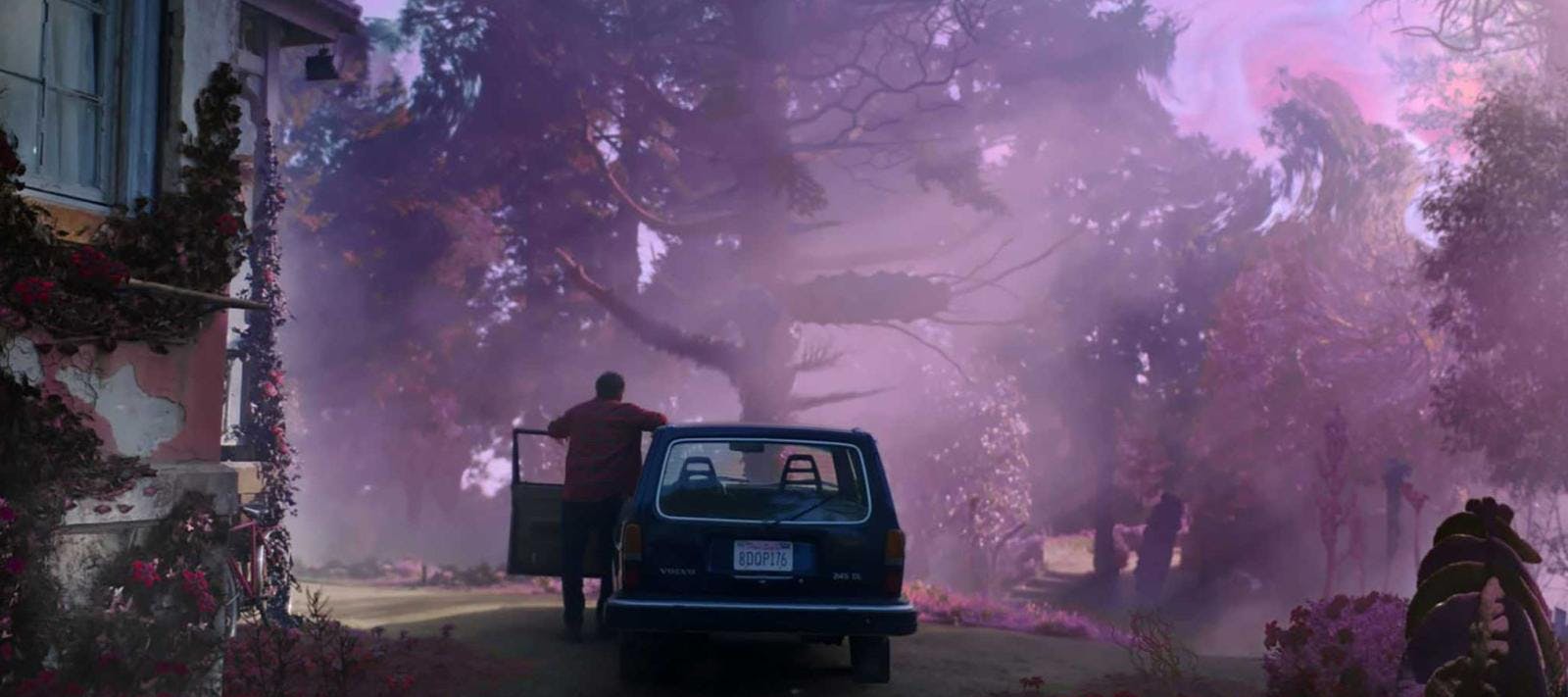
Lovecraft’s Frightful Messenger
“West of Arkham the hills rise wild, and there are valleys with deep woods that no axe has ever cut.”

So begins H.P. Lovecraft’s masterpiece The Colour Out of Space, a novella written and published in 1927 that Lovecraft himself considered his best short story. It tells the tale of the Gardner family, onto whose farm lands a meteorite from outer space which unleashes a mysterious, otherworldly “Colour” that first drives the inhabitants mad, then destroys and alters the land itself, finally changing the family into monsters.
The Colour Out of Space was written in a time of great technological change. A new reservoir had just been built outside of Providence and was, for Lovecraft, a looming shadow of progress over the ancestral home he held so dear. Other modern fears, like the recent discovery of the harmful effects of radiation, fed into Lovecraft’s tale of terror about unseen dangers we were hopeless to stop.
What this author believes Colour does better than almost any of Lovecraft’s other stories is that we care about the horrible atrocities befalling the people because we care about the people themselves. These are not his normal cold, analytical protagonists: journalists, scientists, or academics; these are regular people. Kind people, who only want to mind their own business and children who have done nothing wrong.
Unlike many of his stories, there is no central being that is revealed to be “pulling the strings,” no harbinger of destruction with a conscious goal. Lovecraft hated that science fiction writers routinely presented extraterrestrials as being humanoid, whereas he felt that whatever came from outer space may be as unknowable to us as, well, a being that exists as a spectrum of light. We don’t know what it is, what it wants, or if it even wants anything at all. A perfect encapsulation of Lovecraft’s central fear: the fear of the unknown.
Adapting Lovecraft’s work has always been a challenge for filmmakers, largely because he relies heavily on the reader’s imagination to describe his horrors. “The thing was so horrific it couldn’t possibly be described” is a common theme in his work. When filmmakers attempt to go too literal or feel too beholden to the accuracy of the source material, we are left with films that are devoid of character, or too focused on spectacle. Filmmakers like Stuart Gordon (Re-Animator) have thrived in adapting Lovecraft because they are unafraid to make the story their own. Gordon adds subtext to the characters, wherein the original story there is very little beyond a surface layer of intention. Adapting Lovecraft requires running the original story through a sieve, expanding the characters, and giving us a reason to care about these horrible, unimaginable things befalling our heroes.
Richard Stanley faced a similar challenge in adapting Colour. Lovecraft’s descriptions of the Colour – the ethereal, intangible “antagonist” of the tale – are similarly vague like his other works. It is a Colour beyond the spectrum of human sight, both self-aware and not.

Other cinematic adaptations of Colour have used many different techniques to visually convey something so elusive, to varying degrees of success. The German adaptation, Die Farbe (2010) utilizes stark black and white photography for the entire film, only adding color when the purple Colour begins to infiltrate the land, and eventually the family. But we care less about the family in peril than we do about the spectacle of what we’re seeing.

Similarly, the Boris Karloff film Die Monster Die! (1965), while a fun, often-overlooked, Corman-style sci-fi thriller, focuses on the horrors of the mutated family as monsters, rather than the world-ending nihilism pervasive in Lovecraft’s story. Both are fun adaptations, with their own strengths, but there’s something intangible that feels left out, bigger than humanity. Something cosmic.
Stanley’s psychedelic, splattery descent into insanity, Color Out of Space, is a prime example of how to do Lovecraft right. Its horrors are both concrete and imminent, as well as ethereal, psychological, and unknowable. It is a familial tragedy wrapped in the fabric of unfathomable nihilistic fear. That attention to the emotional bond these characters share and that we share with them, coupled with Stanley’s mastery of spiritual and philosophical horror, is what makes his adaptation so successful. He not only understands why we care about these people but the cosmic implications of what the Colour is doing to their souls. He bridges the gap between the micro and the macro elements of Lovecraft’s work that often prove elusive.
Lovecraft’s works all hover around similar themes, but Colour Out of Space expertly combines all of them into a single, impactful tale. It is a seminal work of sci-fi horror that remains as effective today, almost 100 years after its publication, as it was when it first appeared in Amazing Stories magazine … for which Lovecraft was paid $25.
Not a bad price for a near-century of cosmic terror.
Graham Skipper is an actor, filmmaker, and lifelong horror fan most known for originating the role of Herbert West in Stuart Gordon’s stage production of Re-Animator: The Musical, as well as starring in Beyond The Gates, Almost Human, and The Mind’s Eye. His directorial debut, Sequence Break, is out now on Shudder.
